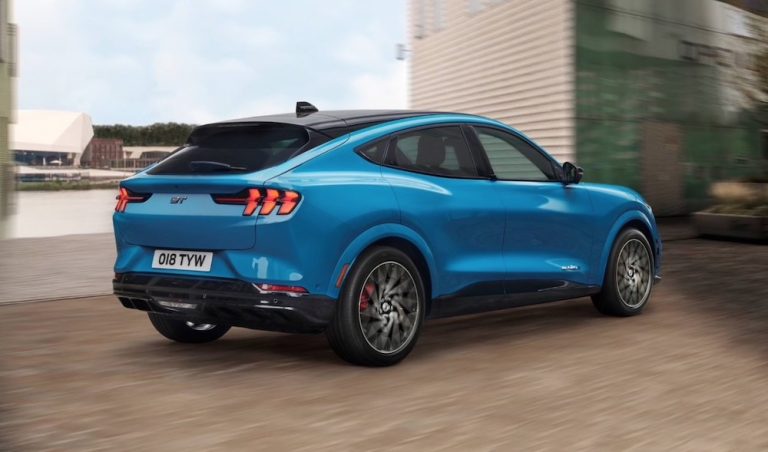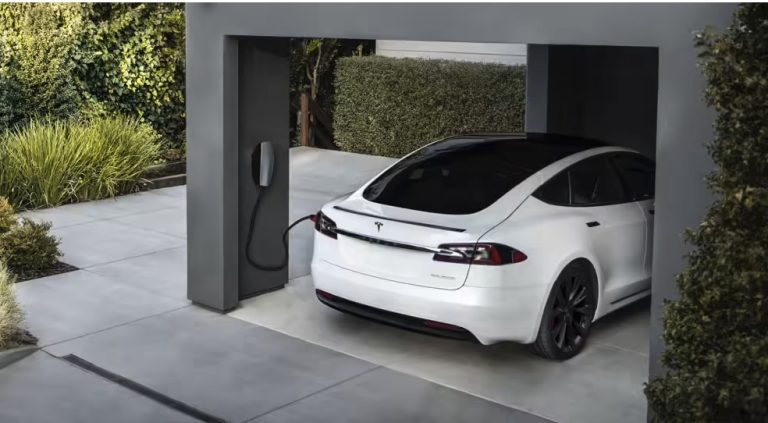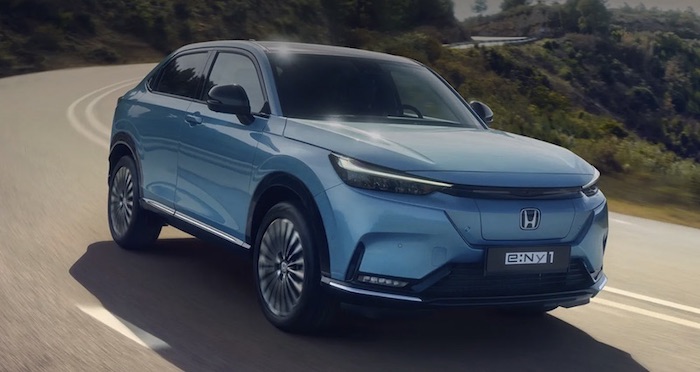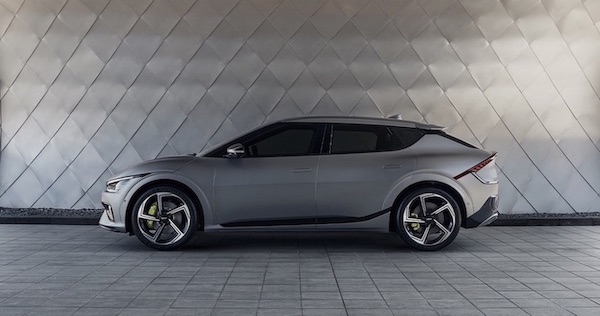Electric Cars: The Basics
For those of you new to zero-emission electric driving, we recommend a read of the following articles:
Sign up to the e-zoomed Electric Living newsletter
The All-Electric Kia EV3 SUV
Kia Corporation, the South Korean automotive manufacturer is fast developing a portfolio of lower-emission ‘eco’ vehicles, to include, zero-tailpipe emission battery-electric vehicles (BEVs), plug-in hybrid electric vehicles (PHEVs) and mild hybrids. The Korean automotive company is headquartered in Seoul, and it is South Korea’s second largest automotive manufacturer after the Hyundai Motor Company (Hyundai owns a 33.88% stake in Kia Corporation). At one point, the US automotive manufacturer, Ford Motor Company, also owned a stake in Kia.
Kia Corporation has been active in the European markets since 1991. The Kia electric vehicle (EV) portfolio includes both, battery-electric vehicle (BEV) and plug-in hybrid electric vehicle (PHEV) models:
- All-electric Kia Niro
- All-electric Kia EV6
- All-electric Kia EV6 GT
- All-electric Kia EV9
- All-electric Kia EV3
- All-electric Kia Soul EV
- Kia Niro Plug-In Hybrid
- Kia XCeed Plug-In Hybrid
- Kia Ceed Sportswagon Plug-In Hybrid
- Kia Sorento Plug-In Hybrid
- Kia Sportage Plug-In Hybrid
The competition in the fast burgeoning compact all-electric SUV segment continues to increase, and the launch of the latest battery-electric vehicle (BEV) from Kia is testament to the attractiveness of this compact segment. The all-electric Kia EV3(B-Segment) is in direct competition with other compact electric SUVs, like the pure electric Volvo EX30. The EX30 has a 2.65m wheelbase, 4.23m length and 1.55m height. In comparison, the EV3 has a 2.68m wheelbase, 4.31m length and 1.57m height. The EV3 also competes against the all-electric Jeep Avenger, the all-electric Volkswagen ID.3, and other compact EVs.
The EV3 is part of Kia’s ‘Plan S’ strategy, which includes the automotive manufacturer launching 15 electric vehicles (EVs) by 2027. The zero-tailpipe emission EV3 SUV is also built on the EV dedicated Hyundai Motor Group’s Electric Global Modular Platform (E-GMP). The all-electric Kia EV6 and the all-electric Hyundai IONIQ 5 use the same platform. The production EV3 (launched in May 2024) has much in common with the concept EV3, which was unveiled in October 2023. The EV3 replaces the all-electric Kia Soul EV, albeit, with a far more compelling proposition on offer, to include, becoming Kia’s most affordable EV. In many ways the EV3 is like a shrunken best-selling Kia EV9 SUV, along with some common styling with the Kia EV6.
The trend to offer BEVs with more than one EV battery size option, is a win for consumers and for the environment. The EV3 is available in two lithium-ion EV battery (400V architecture) options: 58.3 kWh (375 kg)/ 81.4 kWh (470 kg), with a claimed WLTP e-range of 436 km and 605 km, respectively. Even adjusting for real-world driving conditions (weather, temperature, road surface, driving style, etc.), the electric vehicle (EV) should be able to deliver up to 370 km for the 58.3 kWh, and up to 515 km for the 81.4 kWh on a full charge. More than adequate for most day-to-day driving needs. The EV3 onboard EV battery has 22 percent higher energy density compared with the Kia Niro EV battery.
We encourage automotive manufacturers (OEMs) to offer EVs with more than one EV battery size option, as not everyone requires a large onboard EV battery. If you live in a city or town with limited regular long distance driving, than the 58.3 kWh EV battery option will do just fine! The 58.3 kWh BEV can be charged 10%-80% in 29 minutes via a 150 kW DC rapid charger. At 50 kW DC, it will take 55 minutes to achieve an 80% charge. The 58.3 kWh variant has a maximum DC charging capability up to 120 kW DC. Given the size of the onboard EV battery, this is adequate.
While the larger 81.4 kWh EV battery an be charged 10%-80% in 31 minutes via a 150 kW DC rapid charger. At 50 kW DC, it will take 79 minutes to achieve an 80% charge. The 81.4 kWh has a maximum DC charging capability up to 128 kW DC. Given the size of the onboard EV battery, a faster DC charging capability would have been more appropriate. As an example, the all-electric Genesis GV60 compact SUV with a 77.4 kWh onboard EV battery offers ultra-rapid DC charging capability up to 350 kW DC, as standard.
To further increase the efficiency (range) of the EV, the electric car incorporates the Kia i-Pedal 3.0 and Smart Regenerative 3.0 systems. The EV has 4 regenerative levels (Level 0, 1, 2 and 3). Interestingly, Kia does not offer a heat pump as standard on all variants. It is only available as standard on the most expensive trim. A pity!
The manufacturer also claims a ‘world’s first’, in that, the EV3 is the first vehicle to deploy a simultaneous heat absorption system i.e. it captures heat from both the vehicle and the outside air to recycle and increase its efficiency. It is also worth noting that despite the body stye, the EV has achieved a decent aerodynamic drag coefficient of 0.26Cd. The lower the drag coefficient, the greater the efficiency of the vehicle, resulting in increased e-range.
The e-SUV is available in 3 grades (Earth 2, Earth 3 and GT-Line). All variants are front-wheel drive (FWD), with a single-motor powertrain i.e. the electric motor drives the front wheels. The entry-level Kia EV3 (58.3 kWh) can achieve 0-100 km/h in 7.5 seconds, while the Kia EV3 (81.4 kWh) can achieve 0-100 km/h in 7.7 seconds. All variants offer up to 201 bhp and 283 Nm peak torque. The top speed of the electric car is 170 km/h. The manufacturer has plans to offer an all-wheel drive (AWD) variant in due course (2026).
The Kia EV3 incorporates up to 10 sustainable solutions, to include: Bio paint, Bio-plastic, Bio PU leather alternative, Recycled PET yarns, Recycled PET / Fishing net carpets, BTX-free paint, PCM plastic, Recycled PET fabric, Bio PU foam and Recycled PET felt. It is now common practise for automotive manufacturers to incorporate a number of sustainable materials, to further enhance the environmental credentials of the EV.
The EV3 offers a generous level of onboard technology, to include: three-screens (12.3-inch driver display, 5.3-inch climate control touchscreen, 12.3-inch touchscreen navigation system), Wireless Apple CarPlay™ and Android Auto™, vehicle-to-load (V2L) etc. The EV3 also offers a host of safety features and driving aids. Some of these include: front and rear parking sensors, reversing camera system, forward collision avoidance assist 2.0, highway driving assist 2.0, intelligent speed limit assist, blind-spot collision-avoidance assist, rear-cross traffic collision avoidance assist and more! The BEV has yet to be awarded a NCAP rating, but like its siblings, the EV6 and EV9, we would expect the EV3 to be awarded Five-Star.
In terms of practicality, the five-door five-seat e-SUV has decent headroom and legroom for taller passengers seated in the rear. The EV does not have a transmission tunnel (i.e. the floor is flat), so there is plenty of legroom for the passenger seated on the rear middle seat. The interior cabin is well-laid out, with ample storage in the front and back. The BEV has a 25L frunk, along with a 460 L boot capacity. For its segment the size of the boot is decent. In comparison, the Volvo EX30 has a 318 L boot. For those new to electric driving, the frunk can be used to store the EV charging cable. The Kia EV3 also has a ‘laptop/ lunch table’ for the driver to use when not driving! The rear-view is restricted, but the reversing camera does overcome the problem.
Bottom-line, electric driving is good for the environment and the wallet!
| PROS | CONS |
|---|---|
| Good real-world zero-tailpipe emission electric range | Heat pump not standard on all variants |
| Available in two EV battery sizes | Only available as a front-wheel drive (FWD) |
| Practical and spacious. Frunk (25L) and Boot Capacity (460 L) | Limited DC charging capability. Competitors offer more! |
The All-Electric Kia EV3 SUV (credit: Kia)
| At A Glance | |
|---|---|
| EV Type: | Battery-Electric Vehicle (BEV) |
| Body Type: | SUV |
| Engine: | Electric |
| Available In Ireland: | Yes |
| Variants (4 Options) |
|---|
| Kia EV3 Earth 2 – 58.3 kWh (from € 36,790) |
| Kia EV3 Earth 2 – 81.4 kWh (from € 40,350) |
| Kia EV3 Earth 3 – 81.4 kWh (from € 42,840) |
| Kia EV3 GT-line – 81.4 kWh (from € 47,190) |
| EV Battery & Emissions | |
|---|---|
| EV Battery Type: | Lithium-ion Polymer |
| EV Battery Capacity: | Available in two battery sizes: 58.3 kWh/ 81.4 kWh |
| Charging: | 120-128 kW DC Rapid Charging (10%-80%: 29-31 minutes). Onboard AC charger: 7 kW AC (0%-100%: 9 hrs – 13 hrs) |
| Charge Port: | Type 2 |
| EV Cable Type: | Type 2 |
| Tailpipe Emissions: | 0g (CO2/km) |
| EV Battery Warranty: | 7 years or 160,000 km |
| Average Cost Of Residential Charging | |
|---|---|
| Battery net capacity: 16.7 kWh | € 4.00 |
| Battery net capacity: 30.0 kWh | € 7.19 |
| Battery net capacity: 39.2 kWh | € 9.39 |
| Battery net capacity: 45.0 kWh | € 10.78 |
| Battery net capacity: 50.0 kWh | € 11.98 |
| Battery net capacity: 64.0 kWh | € 15.34 |
| Battery net capacity: 71.0 kWh | € 17.01 |
| Battery net capacity: 77.0 kWh | € 18.45 |
| Battery net capacity: 90.0 kWh | € 21.57 |
| Battery net capacity: 100.0 kWh | € 23.97 |
- Note 1: The average cost of residential electricity in Ireland varies depending on the region, supplier and type of energy used. An average for Ireland is 23.97 cents/kWh.
- Note 2: Not all EV manufactures make available the data on net EV battery capacity, and in a number of instances the EV battery capacity advertised, does not state if it is gross or net capacity. In general, usable EV battery capacity is between 85% to 95% of the gross available capacity.
| Charging Times (Overview) | |
|---|---|
| Slow charging AC (3 kW – 3.6 kW): | 6 – 12 hours (dependent on size of EV battery & SOC) |
| Fast charging AC (7 kW – 22 kW): | 3 – 8 hours (dependent on size of EV battery & SoC) |
| Rapid charging AC (43 kW): | 0-80%: 20 mins to 60 mins (dependent on size of EV battery & SoC) |
| Rapid charging DC (50 kW+): | 0-80%: 20 mins to 60 mins (dependent on size of EV battery & SoC) |
| Ultra rapid charging DC (150 kW+): | 0-80% : 20 mins to 40 mins (dependent on size of EV battery & SoC) |
| Tesla Supercharger (120 kW – 250 kW): | 0-80%: up to 25 mins (dependent on size of EV battery & SoC) |
- Note 1: SoC: state of charge
| Dimensions | |
|---|---|
| Height (mm): | 1560 – 1570 |
| Width (mm): | 1850 |
| Length (mm): | 4300 – 4310 |
| Wheelbase (mm): | 2680 |
| Turning Circle (m): | 10.4 |
| Boot Capacity (L): | 460 |
| Frunk (L): | 25 |
| EV3 58.3 kWh | |
|---|---|
| EV Battery Capacity: | 58.3 kWh |
| Pure Electric Range (WLTP): | 436 km |
| Electric Energy Consumption (Wh/km): | 149 |
| Charging: | 120 kW DC Rapid Charging (10%-80%: 29 minutes). Onboard AC charger: 7 kW AC (0%-100%: 9 hrs) |
| Top Speed: | 170 km/h |
| 0-100 km/h: | 7.5 seconds |
| Drive: | Front-wheel drive (FWD) |
| Electric Motor (kW): | 150 |
| Max Power (bhp): | 201 |
| Torque (Nm): | 283 |
| Transmission: | Automatic |
| Seats: | 5 |
| Doors: | 5 |
| Kerb Weight (kg): | 1,845 |
| Towing Capacity (Braked/Unbraked)/ (kg): | 300 |
| Colours: | 8 |
| NCAP Safety Rating: | N/A |
| EV3 81.4 kWh | |
|---|---|
| EV Battery Capacity: | 81.4 kWh |
| Pure Electric Range (WLTP): | 605 km |
| Electric Energy Consumption (Wh/km): | 149 |
| Charging: | 128 kW DC Rapid Charging (10%-80%: 31 minutes). Onboard AC charger: 7 kW AC (0%-100%: 13 hrs) |
| Top Speed: | 170 km/h |
| 0-100 km/h: | 7.7 seconds |
| Drive: | Front-wheel drive (FWD) |
| Electric Motor (kW): | 150 |
| Max Power (bhp): | 201 |
| Torque (Nm): | 283 |
| Transmission: | Automatic |
| Seats: | 5 |
| Doors: | 5 |
| Kerb Weight (kg): | 1,930 |
| Towing Capacity (Braked/Unbraked)/ (kg): | 1,000 |
| Colours: | 8 |
| NCAP Safety Rating: | N/A |
Used Electric Cars: Top Tips
The growth in electric driving in Ireland has been unabated, but not surprising. Like other international markets, consumers in Ireland (individuals, families and businesses) are seeking environmentally-friendly and cleaner forms of road transportation. Electric driving fits perfectly in the narrative they seek!
We have also witnessed growth in the used electric car market. Five years ago it was challenging to find a reasonable choice of used electric vehicles (EVs), with only a handful of used models available. In 2023, the narrative could not be more different.
Today the choice for consumers seeking second-hand electric cars is vast, to include, leading global automotive brands, body types, budgets etc. Of course, the used EV market will only continue to grow, as consumers continue to become more confident with purchasing new and used electric cars. But of course, as is the case in buying any used product, it is always helpful to have a few helpful tips to avoid costly mistakes!
| Top Tips For Buying A Second-Hand Electric Car |
|---|
| Check the EV real-world range: electric car range is impacted by a number of factors, to include: weather, temperature, road conditions, payload, driving profile and more!. Always take the EV for a test drive, preferably, testing the EV range under as many real-world conditions as possible. |
| Check EV battery performance/ charging/ degradation: in general, an EV battery will degrade 2.3% of maximum capacity a year. |
| Check EV battery warranty: in general, most BEVs have an EV battery warranty of 8 years or 100,000 miles. However, PHEVs have a shorter battery warranty profile. Moreover, some of the earlier generation of electric cars offered shorter battery warranty, usually up to 5 years. Also worth checking if the EV battery can be extended, albeit, with an additional payment. |
| Check service/ maintenance history and costs: this applies to all types of cars, to include petrol, diesel and electric cars. If a car does not have a well documented service history, best to avoid it. |
| Buy a used EV with as large a battery as possible, for the given budget: the larger the onboard EV battery, potentially, the longer the electric range. In particular, for those considering buying a used plug-in hybrid car. Only buy a PHEV with a real-world practical range, so that, the benefits of electric driving can be leveraged. |
| Where possible, look for EVs with DC charging capability: in general, most PHEVs do not offer DC charging, while most of the latest BEVs do. It can be the case, that some of the first-generation of electric cars do not offer DC charging capability. So for those keen on buying a used pure electric car, better to identify one with DC charging capability, and preferably 50 kW DC +. |
While e-zoomed uses reasonable efforts to provide accurate and up-to-date information, some of the information provided is gathered from third parties and has not been independently verified by e-zoomed. While the information from the third party sources is believed to be reliable, no warranty, express or implied, is made by e-zoomed regarding the accuracy, adequacy, completeness, legality, reliability or usefulness of any information. This disclaimer applies to both isolated and aggregate uses of this information.





























